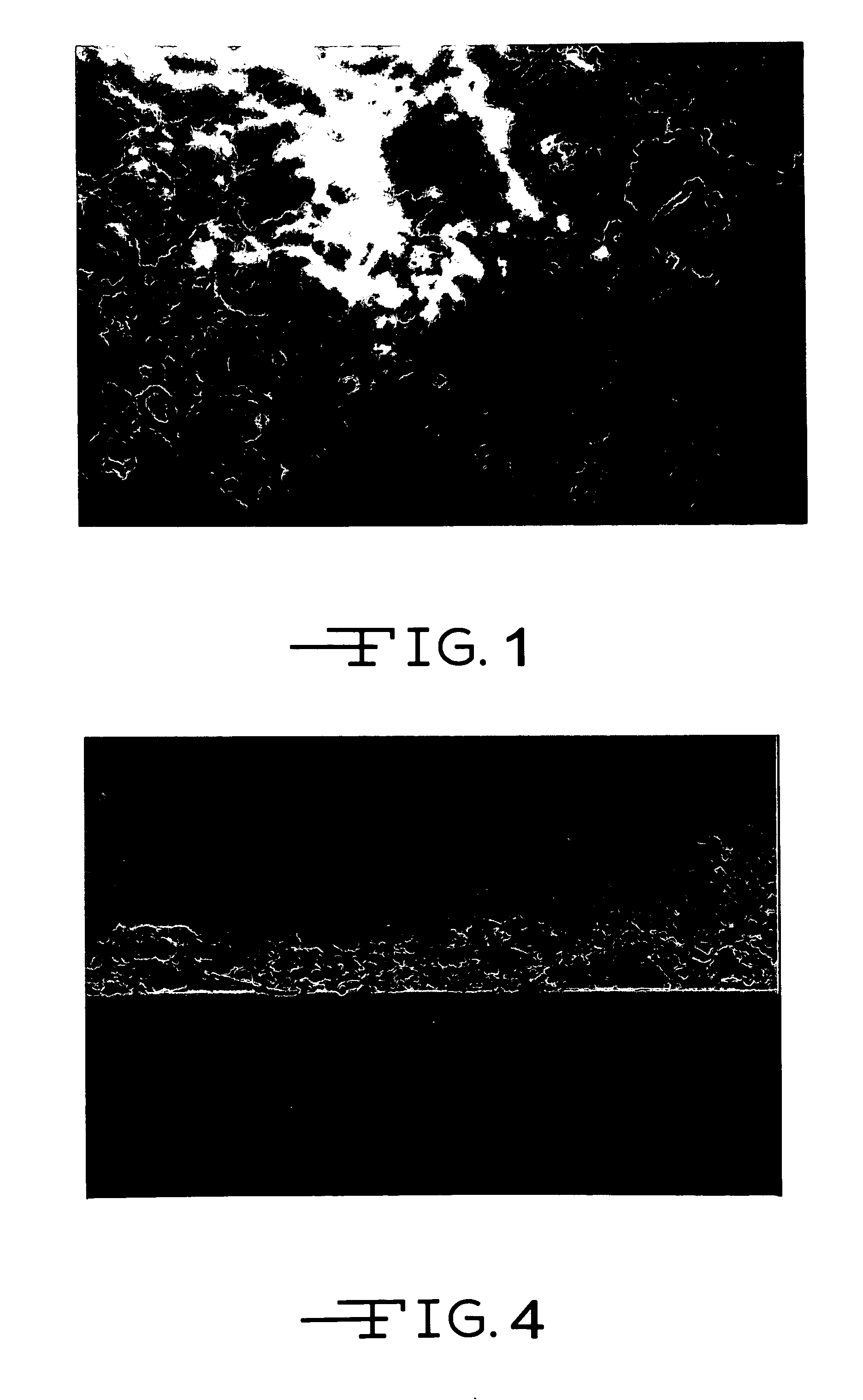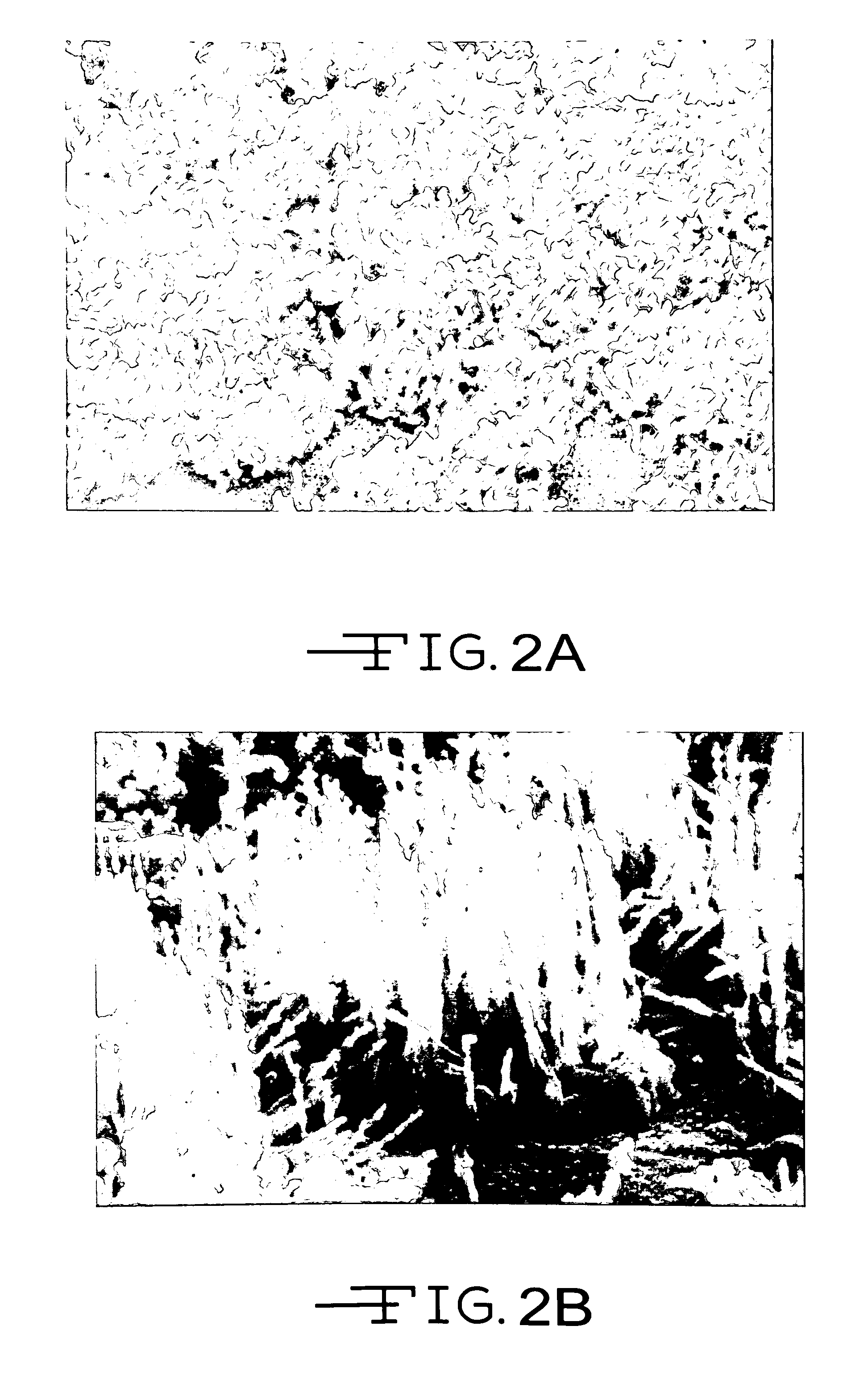Nanotube coatings for implantable electrodes
a technology of nanotubes and electrodes, applied in the field of nanotube coatings for implantable electrodes, can solve the problems of affecting the battery life of the system, affecting the electrical properties of surrounding tissue, and encapsulation process also affecting the sensing of intrinsic milivolt signals, etc., and achieves excellent biocompatibility, low polarization, and increased surface area
- Summary
- Abstract
- Description
- Claims
- Application Information
AI Technical Summary
Benefits of technology
Problems solved by technology
Method used
Image
Examples
example i
[0024]A tantalum substrate was placed in a closed chamber. The chamber was heated to about 650° C. with hydrogen gas flowing through the chamber at a rate of about 1 liter / min. for about every 20 cc of reactive volume. When the reaction chamber reached the desired temperature, 0.5 liter / min of acetylene was added to the reaction gas stream. After about 15 minutes, it was observed that a useable nanotube coating had grown in-situ on the tantalum substrate. The photographs in FIGS. 3A and 3B show the resulting in-situ grown nanotube coating on the tantalum substrate at magnifications of 20,000× and 50,000×, respectively.
[0025]A useable nanotube coating can be grown in a similar manner on a substrate of titanium, zirconium, iridium, platinum, niobium, and nitrogen-doped amorphous carbon, or virtually any substrate provided with a thin film coating of these materials. These catalytic or nucleating materials have biocompatible properties similar to those of tantalum.
example ii
[0026]Etching in aqueous oxalic acid solution at 80° C. for 1 hour cleaned a titanium electrode tip.
[0027]A chloroiridic acid solution was prepared by dissolving 1 gram of chloroiridic acid in 35 ml of isopropyl alcohol at room temperature with stirring. Loose nanotube powder was then added while stirring at a high shear rate until a thick, viscous mixture was obtained. The iridium oxide coated substrate was then dipped into the mixture to provide a viscous coating of nanotubes thereon. Heating the coated substrate to about 340° C. in air for about 1 hour converted the metal chloride to iridium metal, which was then subsequently oxidized by further heating. The iridium oxide coated substrate had embedded nanotubes.
[0028]The photograph in FIG. 4 shows a similarly generated nanotube coating bonded to a PYREX® glass substrate with iridium oxide binder at a magnification of 20,000×. While the experiment was done with a titanium electrode tip, the reason for the glass substrate was becau...
PUM
| Property | Measurement | Unit |
|---|---|---|
| temperature | aaaaa | aaaaa |
| temperature | aaaaa | aaaaa |
| time | aaaaa | aaaaa |
Abstract
Description
Claims
Application Information
 Login to View More
Login to View More - R&D
- Intellectual Property
- Life Sciences
- Materials
- Tech Scout
- Unparalleled Data Quality
- Higher Quality Content
- 60% Fewer Hallucinations
Browse by: Latest US Patents, China's latest patents, Technical Efficacy Thesaurus, Application Domain, Technology Topic, Popular Technical Reports.
© 2025 PatSnap. All rights reserved.Legal|Privacy policy|Modern Slavery Act Transparency Statement|Sitemap|About US| Contact US: help@patsnap.com



